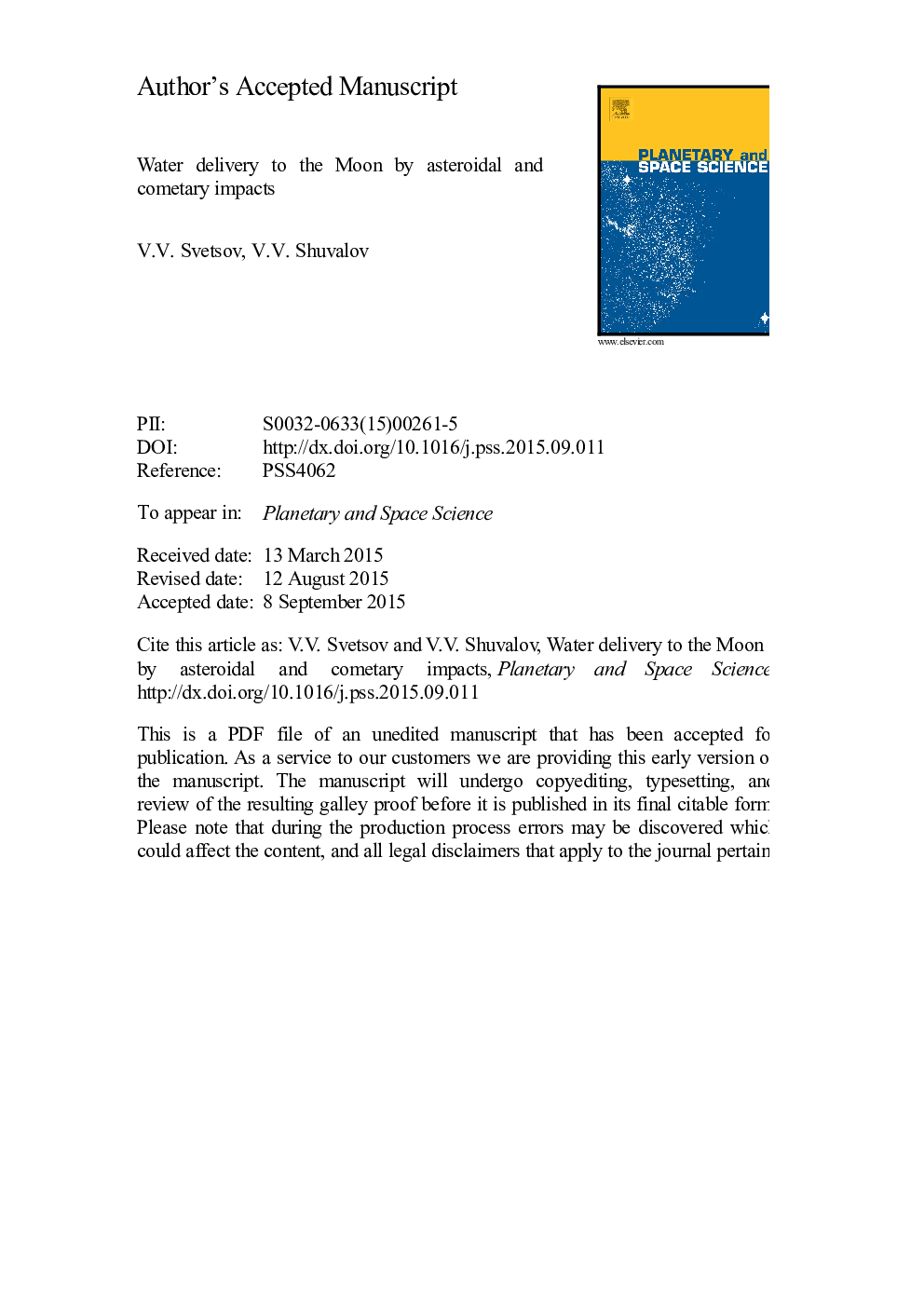| Article ID | Journal | Published Year | Pages | File Type |
|---|---|---|---|---|
| 8143156 | Planetary and Space Science | 2015 | 26 Pages |
Abstract
Recent spacecraft missions detected presence of hydroxyl or water over large areas on the lunar surface. Several craters near the lunar poles have increased concentrations of hydrogen suggesting impact delivery of water. Using a numerical model, we have carried out computer simulations of the impacts of asteroids and comets in order to estimate the fate of water that can be contained in the projectiles. We find that at impact velocities below ~10Â km/s a significant fraction of a stony projectile remains in the crater and is heated to temperatures below 1000Â K. At these velocities hydrated minerals contained in carbonaceous projectiles decompose only partly. We conclude that the impacts of water-bearing carbonaceous asteroids could produce deposits of free and chemically bound water inside some lunar craters. The relative number of these craters may reach several percent. In contrast to asteroids, water from cometary impacts, even at low velocities, is vaporized, and vapor plume expands and disperses over the lunar surface.
Related Topics
Physical Sciences and Engineering
Earth and Planetary Sciences
Geophysics
Authors
V.V. Svetsov, V.V. Shuvalov,
